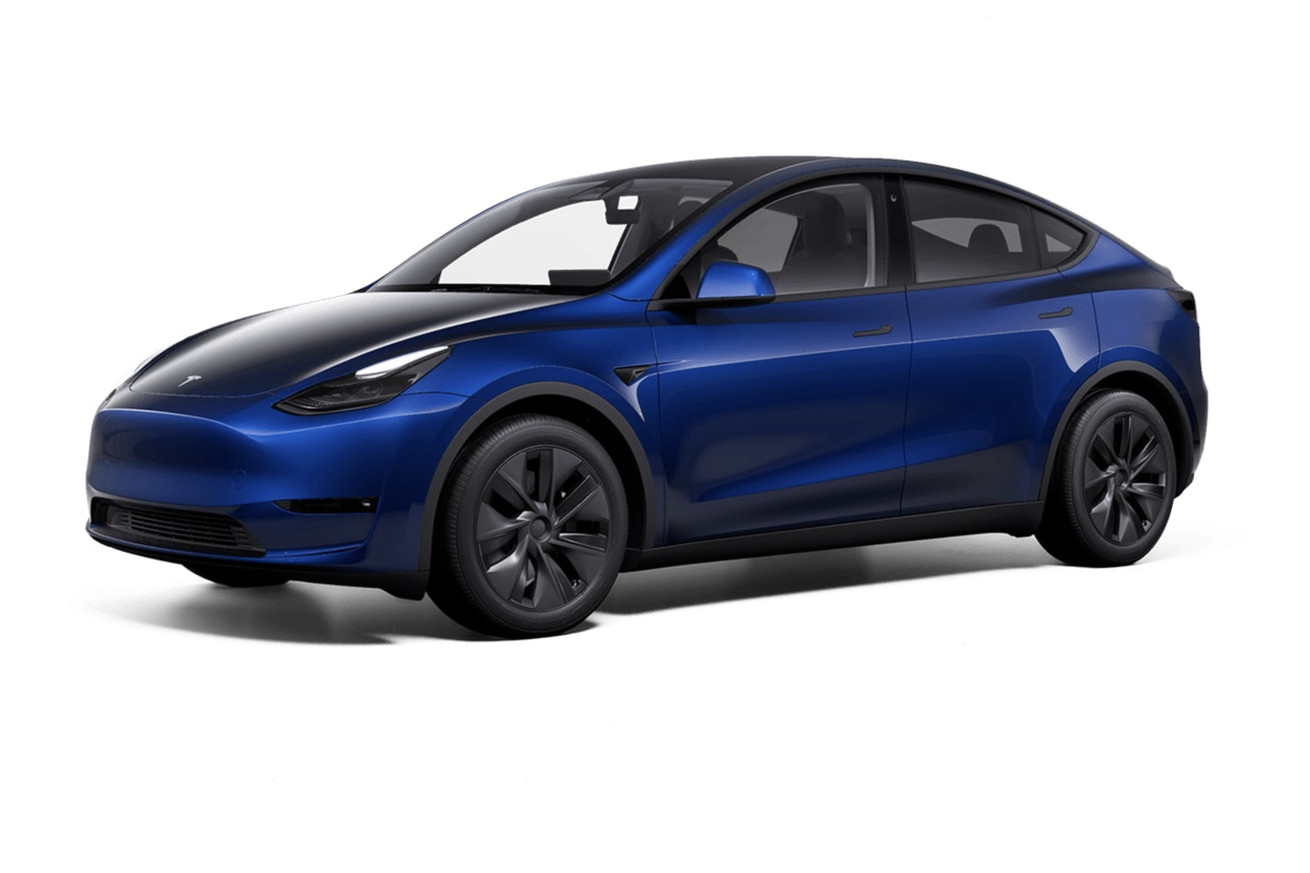
Editor’s note: Amazon’s October Prime Day is set to kick off on October 10th. Luckily, if you’re someone who likes to shop ahead of time, we’ve rounded up the best early Prime Day deals you can already get.
Less than a month ago, Apple launched its latest batch of smartwatches, introducing the Apple Watch Ultra 2 ($799) alongside the new Apple Watch Series 9 ($399). Each wearable has its own pros and cons, as does the second-gen Apple Watch SE ($249), but the introduction of the new wearables also means there are now more Apple Watch models on the market than ever before — and a lot more deals to be had.
But with all of those options, which one should you pick? Generally speaking, you want to buy the newest watch you can afford so that it continues to receive software updates from Apple. The latest update, watchOS 10, just launched on the Apple Watch Series 4 and newer, though no one can say with certainty whether the Series 4 will get the next big software update or whether it will be exclusive to newer watches.
Picking up a watch from the latest (or a recent) generation ensures you’re getting a smartwatch with an updated design, a robust number of features, and plenty of sensors. Now, let’s get into the deals.
The best Apple Watch Series 9 deals
The Apple Watch Series 9 represents the latest wearable in Apple’s flagship Series lineup. It introduces a slightly faster S9 SiP chip and a second-gen ultra wideband chip, which allow for onboard Siri processing and precision finding with your iPhone. It also offers a brighter, 2,000-nit display and works with Apple’s new “double-tap,” a feature that lets you tap your thumb and index finger together to carry out various actions. While the improvements are welcome, the Series 8 isn’t a vast departure from the prior model, the Series 8.
The Apple Watch Series 9 only just arrived, however, the GPS-equipped model is already on sale at Amazon in the 41mm sizing for $389.99 ($9 off), or in the larger 45mm configuration for $419.99 ($9 off). Both sizes are also available at Best Buy and Target, though, you’ll have to pay the full price in both instances. As for the LTE model with cellular connectivity, it’s currently available at Amazon starting at $489.99 ($9 off), or at Best Buy and Target for its full retail price.
Read our Apple Watch Series 9 review.
The best Apple Watch Series 8 deals
Last year, Apple introduced the flagship Series 8, which brought an updated processor, new temperature sensors that enable menstrual tracking and Crash Detection, and a host of other refinements that made it a minor upgrade over the Series 7. While it’s no longer the latest model, it’s still readily available — often at a discounted price. In fact, the deals we’re seeing on the Series 8 right now are some of the best we’ve ever seen, likely as a result of the Series 9’s arrival.
Although the stock is a bit limited at the moment, you can still pick up the 41mm Series 8 with GPS at Amazon, Best Buy, and Walmart for $319 ($80 off), which remains one of its lowest prices to date. The better deal, however, is on the larger 45mm configuration, which is available at Amazon in select styles for $254.99 ($174 off) when you clip the on-page coupon.
If you’re looking to snag a cellular model, the 41mm configuration is currently available in select styles at Amazon and Walmart for $399 ($100 off). Walmart is also selling the 45mm variant starting at $399 ($130 off), which marks its lowest price to date.
Read our Apple Watch Series 8 review.
The best Apple Watch SE deals
The Apple Watch SE received a refresh in late 2022. It has the same chipset as the Series 8, which is great, but with fewer sensors, no always-on display, and a slightly outdated design compared to the Series 8 and Series 9. Those omissions might take this out of the running for some people, but it still may be exactly what you’re after. Best of all, it starts at $249 for the 40mm Wi-Fi / GPS model, which is $30 less than the previous generation’s baseline cost. Opting for cellular connectivity bumps up the starting price to $299 for the 40mm size (44mm adds $20 to each configuration).
Right now, the 40mm Apple Watch SE with GPS is available for $219.99 ($30 off) at Amazon when you clip the on-page coupon; it’s also on sale for the same price at Target if you belong to the retailer’s free-to-join Target Circle program. The GPS-only model is also available at Amazon and Target in the 44mm sizing for $249.99 ($30 off) — either with a coupon or as part of Target’s Circle program — or in the LTE configuration at Amazon starting at $269.99 ($30 off).
If you’re cool with getting the last-gen model, which lacks an always-on display and some of the more advanced bells and whistles found on the newer Apple Watch models, Walmart is still selling it in the 44mm base configuration for $159, a total of $150 off.
Read our Apple Watch SE (second-gen) review.
The best Apple Watch Ultra 2 deals
Apple’s latest Apple Watch Ultra launched at $799 last month with GPS and LTE support, much like the original model. The ultra-capable smartwatch has the most features, sensors, and ruggedness of any Apple Watch model available thus far, along with a display that’s 50 percent brighter than the first Ultra. The 49mm smartwatch also packs Apple’s new S9 SiP and second-gen ultra wideband chips, just like the Apple Watch Series 9, while maintaining long-lasting battery life, precise GPS tracking, and a bevy of diving-friendly sensors.
While we haven’t seen any significant discounts on the Apple Watch Ultra 2 given how new it is, it’s currently on sale at Amazon in select styles starting at $774 ($25 off). You can also pick up the second-gen wearable at Best Buy and Target, where it’s available for its full retail price of $799.
Read our Apple Watch Ultra 2 review.
The best Apple Watch Ultra deals
Apple released the first-gen Apple Watch Ultra at the tail end of 2022. It was the most capable watch the company had ever released at the time, one buoyed by a host of advanced sensors, a more rugged build, and a number of features squarely aimed at outdoorsy types (including a programmable Action button). While newer, the second-gen model is a pretty incremental update overall, making the last-gen Ultra a pretty attractive deal when you can find it at the right price.
In May, we saw select Apple Watch Ultra configurations plummet to an all-time low of around $702 ($97 off). Although it’s currently not available at that price, Apple’s premium wearable is on sale at Amazon and Best Buy in select configurations starting at $719 ($80 off), its second-best price to date.
Read our Apple Watch Ultra review.
A note on the more premium models
While all of the Apple Watch models and colorways covered here are encased in aluminum (except the Ultras, which have a titanium build), Apple does make a more premium range built out of stainless steel and titanium. These offerings are functionally and aesthetically similar to their aluminum counterparts, with slightly refined colors and finishings — polished for the stainless steel and brushed for the titanium. However, they start at much steeper prices of $749 and above. They, too, can often be found on sale, but they’re never discounted as low as the standard base models, so we don’t include them here.


/cdn.vox-cdn.com/uploads/chorus_asset/file/24979099/xumo.jpeg) Image: Charter / Comcast
Image: Charter / Comcast


/cdn.vox-cdn.com/uploads/chorus_asset/file/24979006/Screenshot_2023_10_05_112709.png) Image: Adobe
Image: Adobe
/cdn.vox-cdn.com/uploads/chorus_asset/file/24979003/Screenshot_2023_10_05_112748.png) Image: Adobe
Image: Adobe




/cdn.vox-cdn.com/uploads/chorus_asset/file/24975970/_Sports_Favoriting.png) Image: Roku
Image: Roku
/cdn.vox-cdn.com/uploads/chorus_asset/file/24975968/googlephotos.jpg) Image: Roku
Image: Roku
/cdn.vox-cdn.com/uploads/chorus_asset/file/24975972/_Expert_Picture_Settings.png) Image: Roku
Image: Roku





/cdn.vox-cdn.com/uploads/chorus_asset/file/24973047/windowssetupgaming.jpg) Photo by Tom Warren / The Verge
Photo by Tom Warren / The Verge


/cdn.vox-cdn.com/uploads/chorus_asset/file/24972260/F_150_Lightning_Flash_3.jpg)
/cdn.vox-cdn.com/uploads/chorus_asset/file/24972267/F_150_Lightning_Flash_6.jpg)


/cdn.vox-cdn.com/uploads/chorus_asset/file/24968221/Screenshot_2023_10_01_at_1.27.40_PM.png) Screenshot: Wes Davis / The Verge
Screenshot: Wes Davis / The Verge
/cdn.vox-cdn.com/uploads/chorus_asset/file/24968359/Screenshot_2023_10_01_at_1.43.40_PM.png) Image: Tesla
Image: Tesla
/cdn.vox-cdn.com/uploads/chorus_asset/file/24968360/Screenshot_2023_10_01_at_1.43.20_PM.png) Image: Tesla
Image: Tesla



/cdn.vox-cdn.com/uploads/chorus_asset/file/24100809/226336_Pixel_Watch_AKrales_0266.jpg) Photo by Amelia Holowaty Krales / The Verge
Photo by Amelia Holowaty Krales / The Verge
/cdn.vox-cdn.com/uploads/chorus_asset/file/24100936/226336_Pixel_Watch_AKrales_0281.jpg) Photo by Amelia Holowaty Krales / The Verge
Photo by Amelia Holowaty Krales / The Verge
